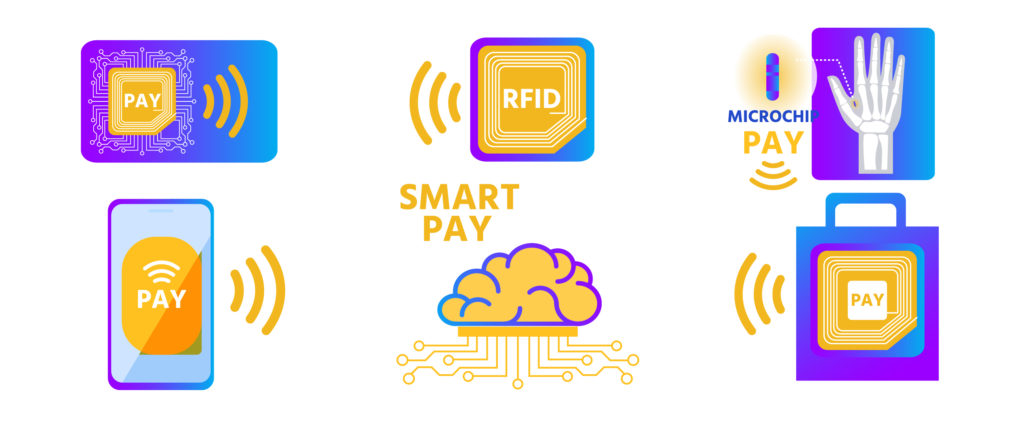
WWII Technology
World War II (WWII) is considered the first time RFID-like technology was used. Radar, discovered in 1935 by Sir Robert Alexander Watson-Watt, was used throughout the American, British, and German military. However, radar signals used to detect incoming aircraft couldn’t tell whether the aircraft belonged to the Allies or Germany.1
To deal with this problem, the Germans had their pilots roll their planes upon returning to base, which altered the radar signal and alerted their crews that it was, in fact, a German plane flying back. The British took this idea one step further, inventing the Identify Friend or Foe (IFF) system, which consisted of a transmitter installed on each plane that would broadcast a signal in response to the radar.1
In 1946, Leon Theremin was the inspiration for developing a Soviet spy tool that used an RFID-like technology. Theremin created a musical instrument that could be played without physically touching it due to the static frequency waves it generated. The Soviet Union, inspired by this, concealed an antenna that was activated by radio waves in a ceremonial seal given to the US ambassador. The seal then relayed audio from its surrounding area back to the Soviets. Because it didn’t require batteries or wires, the device went undetected in the ambassador’s study for 7 full years.2
RFID in the 70s
An article by Harry Stockman in 1948 served as a turning point for research into RFID throughout the next two decades. The article was titled “Communication by Means of Reflected Power.” It promoted the idea that “…considerable research and development work has to be done before the remaining basic problems in reflected-power communication are solved, and before the field of useful applications is explored.”3
The 50s and 60s were populated by scientific articles and presentations detailing the use of radiofrequency (RF) technology to detect objects from long distances. Anti-theft detection and electronic surveillance systems popped up that all used RF tech. However, RFID wasn’t officially patented until 1973, in a landmark claim by Mario W. Cardullo, who created an active RFID tagging system that utilized rewritable memory. That same year, a passive RFID system was patented by Charles Walton, who designed a passive responder that could unlock doors without a key—a technology still used today in many hotel rooms.1
Though these were the first patents, other systems were being developed concurrently, most notably by the US government. The Energy Department needed to track nuclear materials, so it commissioned the Los Alamos National Laboratory to develop a solution. Commercialized in the 1980s, that solution was to put transponders in trucks carrying nuclear substances, which could be read immediately from outside the gates of nuclear facilities, providing the driver’s identification and data related to their cargo. Similar systems that relied on low-frequency waves were ultimately adapted by Los Alamos as passive RFID tags to track medicine dosages given to livestock.1
Setting Standards
In 1999, the Auto-ID center was founded by scientists at the Massachusetts Institute of Technology (MIT) to standardize the format of RFID-encoded information. This group had previously created the Electronic Product Code (EPC) for RFID tags, which included four fields: version number, manufacturer number, product number, and serial number. The idea of the EPC was to link the RFID-tagged item to a database, using an Object Name System (ONS) similar to that of the Domain Name System (DNS). The first test of this technology was performed on a microwave oven, of which an RFID reader was installed that could read RFID tags attached to microwavable meals. The oven read the labels, identified the database via the ONS, and downloaded cooking instructions that allowed the microwave to cook the food.4
RFID tag production costs were high back then. Hence, the Auto-ID center focused its attention on reducing those costs to make RFID a viable identification solution for retail and other industries. Two measures were adopted: the first was to reduce the chip’s size, and the second was to find a manufacturing process that supported small-sized chips. To reduce chip size, they minimized the information available on the chip. Therefore, most of the relevant data was stored in a database, with the tag serving as a locator to link the item with the database. This reduced costs—less material was needed to make the chips and made the tags usable for a more comprehensive array of applications.4
The next step was to find a suitable manufacturing method for such small chips. The conditions needed to ensure precision when handling tiny chips were also required to be economical; however, traditional robots from that time weren’t up to the task. Instead, the Auto-ID group collaborated with Alien Technology to develop a fluidic flow process that utilized vibrations to assemble the chips. This allowed them to manufacture RFID chips via massive parallel assembly, drastically lowering manufacturing costs.4
RFID Today
RFID is now widely used to track items in almost every sector, from biomedical labs to aerospace, engineering, and logistics. It has many advantages over conventional barcodes, including storing far more information and reading multiple tags simultaneously without having to remove items from storage. Costs have been reduced even further with the use of carbon nanotubes to produce chips.5 As RFID technology continues to evolve, it will eventually become cheaper and more user-friendly, keeping inventories and workflows up to date and well-managed.
LabTAG by GA International is a leading manufacturer of high-performance specialty labels and a supplier of identification solutions used in research and medical labs as well as healthcare institutions.
References:
- Roberti M. The History of RFID Technology. RFID Journal. https://www.rfidjournal.com/articles/view?1338. Published 2005.
- https://www.paragon-id.com/en/inspiration/history-radio-frequency-identification-technology. Paragon ID. https://www.paragon-id.com/en/inspiration/history-radio-frequency-identification-technology.
- History of RFID. Global Venture. https://www.globalventurelabels.com/history-of-rfid/.
- Wehr J. A History of the EPC. SecureIDNews. https://www.secureidnews.com/news-item/a-history-of-the-epc/. Published 2005.
- Crepaldi P, Pimenta T. Introductory Chapter: RFID: A Successful History. In: Radio Frequency Identification. IntechOpen; 2017:1-5. doi:10.5772/intechopen.69602